95% of what's inside perfumes, deodorants, body lotions, cleaning products, paints, new carpets, tobacco smoke, shampoos, gasoline and other products are petroleum derived, like acetone, camphor, benzens, aldehydes, ethanol, g-terpins and others. Other indoor contaminants should be more obvious for you: pesticides (like anti-lice products) or solvents (from paints, varnishes, adhesives, treated woods, synthetic fabrics and carpets, and detergents).
"Mild" effects of our daily (or not) exposure to these chemicals are fatigue, disorientation, muscular pain, joint pain, eczemas, eruptions, dizziness, somnolence, nausea, body swelling, accelerated breathing, flue symptoms, asthma, palpitations, high pulse, sinusitis, anxiety, pneumonia, headache, memory loss, decreased focusing capacity, insomnia,
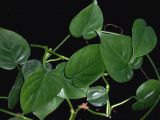 |
On long term, this exposure translates into cancers. How we are affected by this is influenced by our genes, age, sex, diet, health and mood (which influence immunity), drugs we take, medical history and lifestyle (drinking, smoking, drug consume).
Modern homes and buildings, designed for energy efficiency, are often tightly sealed to impede energy loss from heating and air conditioning systems. The ventilated air inside buildings recycles all kinds of solvents, including formaldehyde (an extremely toxic chemical). Synthetic building materials used in modern construction have been found to release potential
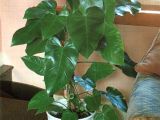 |
Good night sleep in a well aerated room, healthy diet (including food supplements), and physical exercise (sweat eliminates poisons from the body). But here comes a 2-year NASA research that points to an unexpected, cost-effective, environmentally friendly, low energy and completely natural method of detoxifying our houses: the common indoor plants. NASA aimed to assess environmental issues, both on Earth and in space habitats, and this new study has been led by Dr. Bill Wolverton, formerly a senior research scientist at NASA's John C. Stennis Space Center, Bay St. Louis, Miss.
Plants (more specifically the leaves) have been known to function like air pumps. At day light, they take carbon dioxide from the air to make photosynthesis. Moreover, they breathe all the time. This means they take oxygen from the air and release carbon dioxide. Plants also sweat, mainly through their leaves. Water and gases go in and out through small pores called stoma. Closed or opened stoma show how active the plants are at a given moment. Because plants sweat, they keep room's correct humidity levels.
 |
19 species and varieties of ornamental plants have been tested for their effectiveness in removing the main toxins connected to indoor air contamination. 17 are true houseplants, and 2 species of daisies are used indoors as seasonal decorations. The houseplants are tropical or subtropical species growing beneath dense tropical canopies, thus they subsist in low light, and are more efficient in absorbing gases, including toxic ones. Plants do not absorb contaminants only trough leaves, but also through roots and their root-associated bacteria.
Some indoor plants proved to be so efficient in absorbing the air toxins that some could be launched into space integrated in biological life support systems aboard future orbiting space stations.
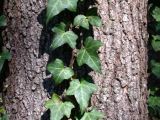 |
Each plant species was tested in sealed, Plexiglas chambers in which chemicals were injected. Tested chemicals included:
Trichloroethylene (TCE), largely employed in the metal degreasing and dry cleaning industries, printing inks, paints, lacquers, varnishes, and adhesives. It is a powerful liver cancer inducing factor. The best TCE removers were peace lily (for TCE from cleaning products), Dracaena (TCE from adhesives, ink, dyes, lacquers, paints and varnishes), gerbera daisy (TCE from adhesives), and bamboo palm.
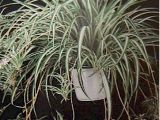 |
It is a skin and eyes irritant (repeated contact causes drying, inflammation, blistering and dermatitis), embryotoxic and cancer causing factor. It has been connected to human leukemia. The aromatic benzene vapors cause dizziness, weakness, euphoria, headache, nausea, blurred vision, respiratory diseases, tremors, irregular heartbeat, liver and kidney damage, paralysis and unconsciousness. Animal tests resulted in cataract formation and diseases of the blood and lymph. Chronic exposure provokes headaches, loss of appetite, drowsiness, nervousness, psychological issues and blood diseases (like anemia) and bone marrow diseases.
The champion plants in removing benzene appeared to be: ivy, gerbera daisies, pot mums, peace lily, bamboo palm, and Mother-in-law's Tongue. The source of benzene also counted: Chinese Evergreens and pot mums extract well benzene coming from detergents, while Dracaena that coming from ink, dyes, tobacco smoke and rubber. Ivy extracted easily the toxins coming from petroleum products, while benzene from plastics was rapidly sucked up by Gerbera daisy.
 |
Most common household cleaning agents have formaldehyde. UF resins are used as stiffeners, wrinkle resisters, water repellents, fire retardants and adhesive binders in floor coverings, carpets and permanent-press clothes, while simple formaldehyde abounds in natural gas, kerosene, and cigarette smoke.
The chemical is an irritant of the mucosae of the eyes, nose and throat, and causes dermatitis and headaches. Formaldehyde is a common cause of asthma and has been connected to throat cancer.
The best plants for removing formaldehyde proved to be the bamboo palm (from carpeting), Mother-in-law's tongue (from paper), dracaena warneckei, peace lily, dracaena marginata, golden pothos, philodendron (from carpeting and furniture), ficus (from UF foams), ivy (from cleaners) and green spider plant (from plywoods and particle boards).
This is how much of the contaminants were removed by plants from a sealed room in 24 hours:
| Formaldehyde % | Benzene % | Trichloroethylene % | |
| Dracaena massangeana | 70 | 21.4 | 12.5 |
| Dracaena deremensis | 50 | 70 | 20 |
| Ficus Benjamina | 47.4 | 30 | 10.5 |
| Spathiphyllum | 50 | 80 | 23 |
| Epipremnum aureus | 67 | 67 | 9.2 |
| Chrysanthemum morifolium | 61 | 53 | 41 |
The plants recommended by the NASA research are:
1. Philodendron scandens subsp oxycardium heartleaf philodendron (philodendrons come from tropical Americas and are related to arrowheads).
2. Philodendron domesticum, elephant ear philodendron.
3. Dracaena fragrans, varieties `Massangeana', `Janet Craig' and `Warneckii', cornstalk Dracaena, happy plant or Corn Plant, a relative of dragon trees from Africa.
4. Hedera helix, common ivy, which is also an outdoor plant originated from southern Europe.
5. Chlorophytum comosum, spider plant, a South African species.
6. Ficus benjamina, weeping fig tree, from southeastern Asia and Australia.
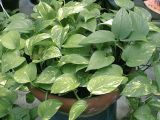 |
8. Spathiphyllum x `Mauna Loa', a peace lily hydrid obtained from tropical American and Asian species.
9. Philodendron bipinnatifidum cut-leaf philodendron, tree philodendron, selloum, self-header from the rain forests of Paraguay and southeastern Brazil.
10. Aglaonema modestum, Chinese evergreen from southern China, related to philodendrons.
11. Chamaedorea sefritzii, bamboo or reed palm, a palm tree species originated from tropical Americas.
12. Sansevieria trifasciata, snake plant or mother-in-law's tongue, an African plant related to Butcher's broom.
13. Dracaena marginata , red-edged dracaena or Madagascar dragon tree.
14. Gerbera jamesonii, Gerbera daisy, from South Africa.
15. Chrysanthemum x morifolium, pot mums, a hybrid daisy from Asia.
 |
"Plants take substances out of the air through the tiny openings in their leaves (stoma). But research in our laboratories has determined that plant leaves, roots and soil bacteria are all important in removing trace levels of toxic vapors. Combining nature with technology can increase the effectiveness of plants in removing air pollutants. A living air cleaner is created by combining activated carbon and a fan with a potted plant. The roots of the plant grow right in the carbon and slowly degrade the chemicals absorbed there," said Wolverton.
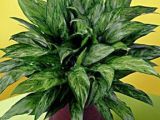 |
"Two plants per 100 square feet or two plants per a small office keep the air pure [and] healthy," recommended Wolverton.
These plants not only make your office or house a more pleasant place, but also they will increase air quality, making you feel better and perform/work better. Further research is aimed to see the efficacy of indoor plants in removing other common indoor air pollutants, like asbestos; or coming from pesticides, detergents, solvents, and cleaning fluids; fibers released from clothing, furnishings, draperies, glass, carpets, and insulation; fungi and bacteria; and tobacco smoke.
Source: http://news.softpedia.com/news/Top-15-NASA-039-s-Plants-That-Can-Save-Your-Life-78345.shtml

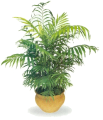














No comments:
Post a Comment